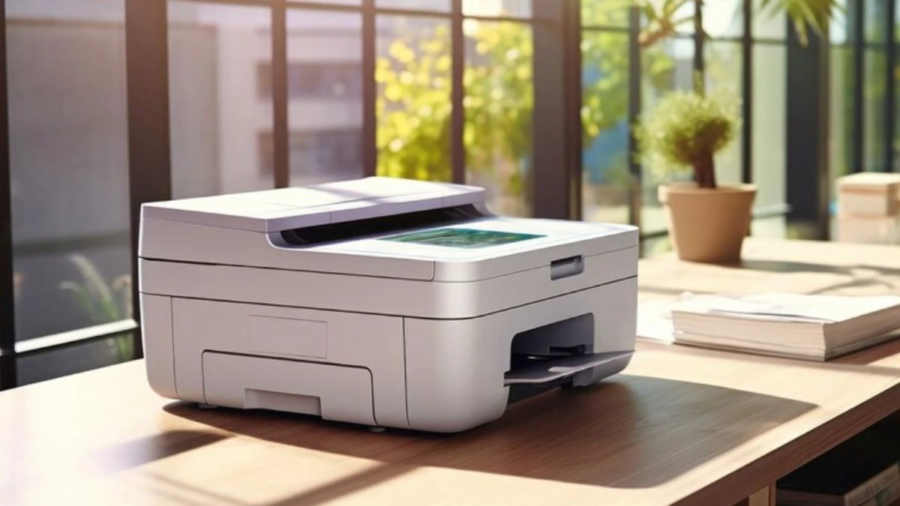Printer configuration problems can arise due to issues with settings, drivers, or network connectivity. Here’s a guide to resolving typical printer configuration issues:
1. Check Printer Setup and Connections
- Verify Physical Setup: Ensure that the printer is plugged in and turned on. For USB printers, check that the cable is securely connected. For wireless printers, confirm the printer is connected to the same Wi-Fi network as your computer.
- Review Network Settings: For network printers, make sure they are on the same network as the device sending the print job. Reconnect the printer to the Wi-Fi if needed, or check the network settings in the printer’s menu.
2. Set as Default Printer
- Sometimes, issues occur if the printer you intend to use is not set as the default:
- On Windows, go to Control Panel > Devices and Printers, right-click the printer, and select Set as default printer.
- On macOS, go to System Preferences > Printers & Scanners, select your printer, and click Default Printer to set it as the preferred choice.
3. Clear and Restart the Print Queue
- A jammed print queue can prevent new jobs from being processed correctly:
- Go to Devices and Printers, right-click the printer, and select See what’s printing.
- Right-click any pending print jobs and select Cancel to clear the queue. Restart your printer afterward to reset it.
4. Update or Reinstall Printer Drivers
- Outdated or corrupted drivers are a common cause of configuration problems:
- Update: Visit the printer manufacturer’s website, find the latest driver for your model, and install it.
- Reinstall: If updating doesn’t help, try uninstalling and reinstalling the driver:
- On Windows, go to Device Manager, locate your printer, right-click, and choose Uninstall device. Restart your computer, then reinstall the printer using Devices and Printers > Add a printer.
- On macOS, go to System Preferences > Printers & Scanners, remove the printer, and add it back.
5. Run the Printer Troubleshooter (Windows)
- Windows has a built-in tool that can identify and fix common printer configuration issues:
- Go to Settings > Update & Security > Troubleshoot > Additional troubleshooters.
- Select Printer and follow the prompts to let Windows detect and resolve issues.
6. Configure Printer Port Settings
- Incorrect port settings can prevent the printer from receiving data:
- Go to Devices and Printers, right-click your printer, and select Printer properties.
- Go to the Ports tab and make sure the correct port is selected. For a network printer, this might be a TCP/IP port rather than a USB port.
7. Disable SNMP Status (Network Printers)
- Simple Network Management Protocol (SNMP) can sometimes cause network printers to appear offline:
- In Devices and Printers, right-click your printer, select Printer properties, go to the Ports tab, and click Configure Port.
- Uncheck SNMP Status Enabled and click OK. This may help stabilize the connection for network printers.
8. Adjust Printer Settings in Printer’s Software
- Many printers have setup software that allows you to change settings like paper type, print quality, and connectivity preferences. Use this software to adjust settings if your prints aren’t coming out as expected or if there are connectivity issues.
9. Assign a Static IP Address (for Network Printers)
- Assigning a static IP address can prevent a network printer from changing IPs and disconnecting:
- Access your router settings, assign a static IP to the printer based on its MAC address, and reconnect the printer using this IP address.
10. Check for System Updates
- Operating system updates often include printer driver updates and fixes:
- On Windows, go to Settings > Update & Security > Windows Update.
- On macOS, go to System Preferences > Software Update.
11. Reset the Printer to Factory Settings
- If configuration issues persist, consider performing a factory reset:
- This option is usually available in the Settings or Network Settings menu of the printer. Consult your user manual for specific instructions.
12. Re-add the Printer Manually
- Sometimes, removing and re-adding the printer can resolve configuration issues:
- On Windows, go to Devices and Printers, right-click your printer, select Remove device, then select Add a printer.
- On macOS, go to System Preferences > Printers & Scanners, select the printer, click the – button to remove it, then click + to add it back.
13. Verify Security Software Settings
- Firewalls or antivirus programs can sometimes block printer connections:
- Temporarily disable the firewall or antivirus to test if they’re causing the problem. If so, add the printer as an exception in the security settings.
14. Contact Technical Support
- If none of the above steps solve the configuration issue, reach out to the printer’s technical support team. They may provide specific guidance or suggest repairs if a hardware issue is suspected.
By following these steps, you should be able to resolve most printer configuration problems and restore normal printing functionality.

